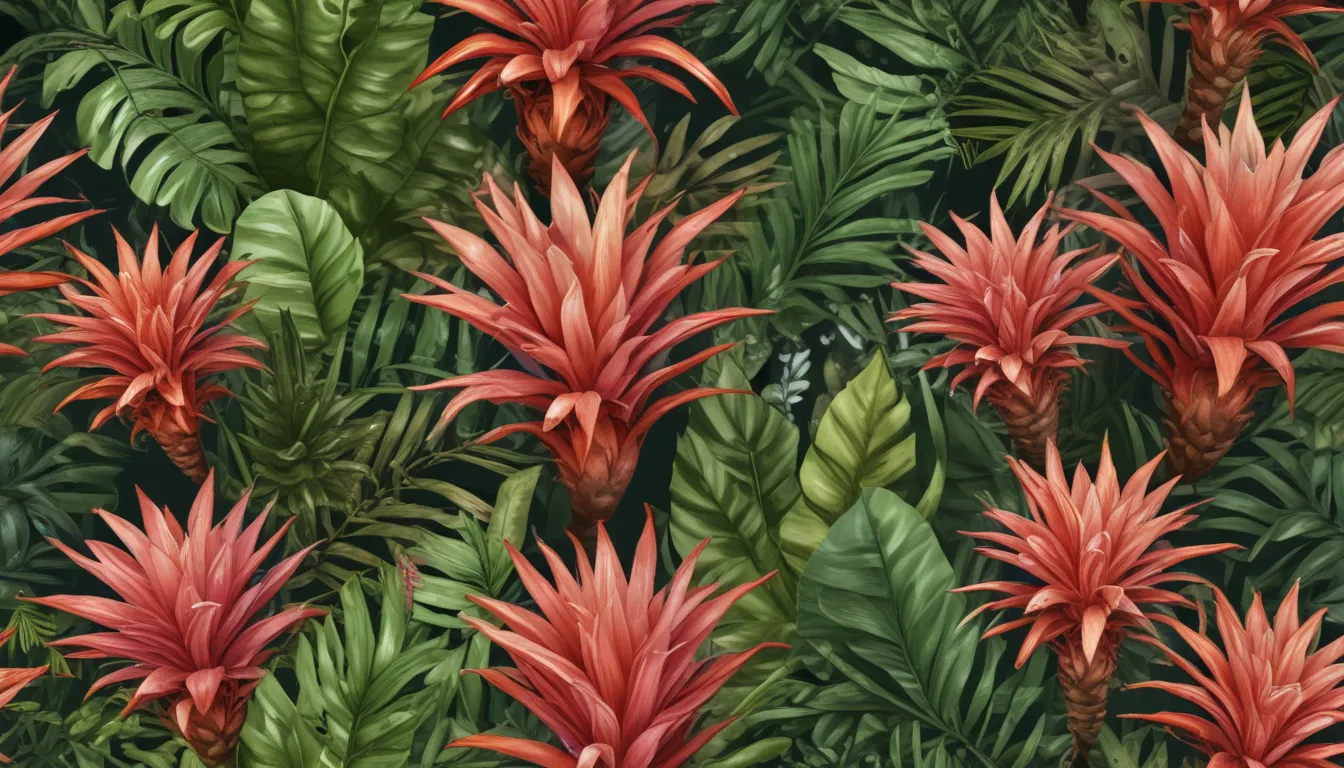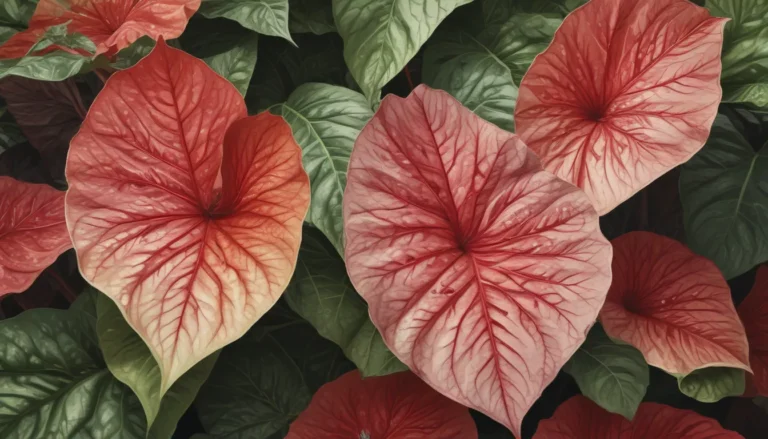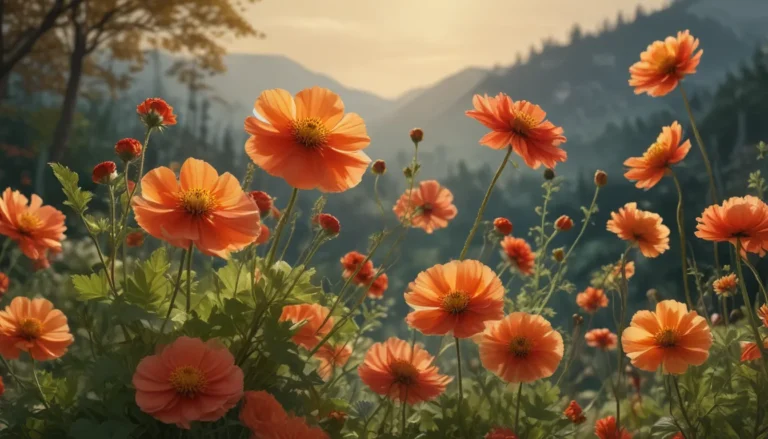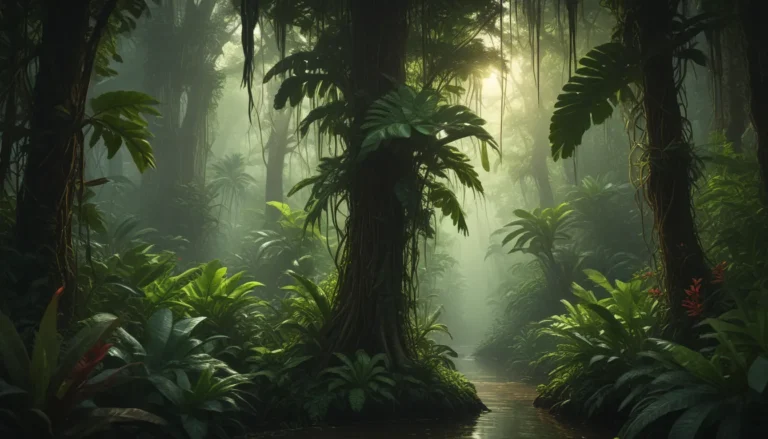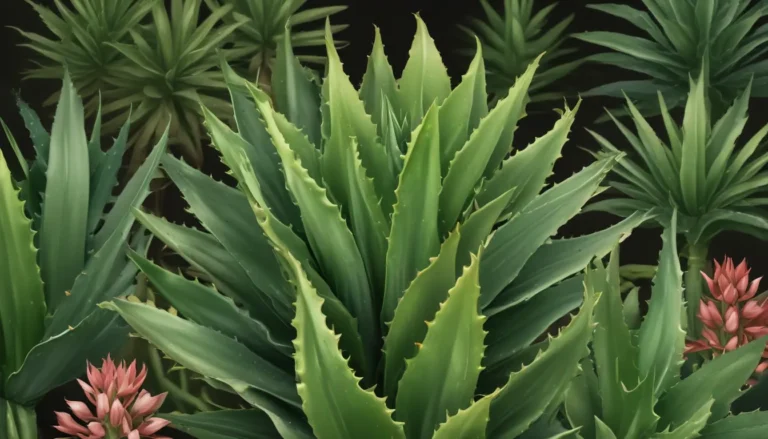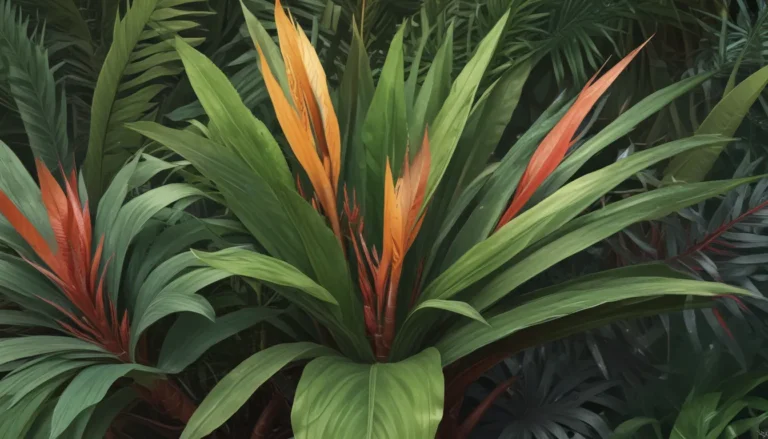The pictures we use in our articles might not show exactly what the words say. We choose these pictures to make you interested in reading more. The pictures work together with the words but don’t take their place. The words still tell you the important facts.
Bromeliads are not your average plants – they are a unique and stunning addition to any indoor or outdoor space. With their vibrant colors, diverse shapes, and remarkable abilities, bromeliads have captured the attention of plant lovers worldwide. In this article, we will uncover 11 astonishing facts about bromeliads that will leave you in awe. From their special water-collecting mechanisms to their symbiotic relationships with other organisms, these plants have a story to tell. So, let's embark on a journey into the extraordinary world of bromeliads.
The Colorful and Unique World of Bromeliads
Bromeliads are a colorful bunch, showcasing a wide range of vibrant hues and shapes. From striking reds and oranges to subtle pinks and greens, these plants add a pop of color to any collection. Their leaves come in various shapes, from spiky and serrated to wide and flat, creating a diverse and eye-catching display.
Surviving in Low Light Conditions
One of the fascinating qualities of bromeliads is their adaptability to different lighting environments. While many species thrive in bright, indirect light, some can survive in low light conditions. This makes them a perfect choice for brightening up corners of your home or office that lack natural light.
A Unique Water Collection System
Unlike most plants that rely on their roots for water absorption, bromeliads have specialized structures called "tanks" or "cups" in the center of their rosettes. These cups collect water, creating a habitat for small organisms that contribute to the plant's ecosystem. It's a unique and efficient way for bromeliads to stay hydrated.
Longevity Before Flowering
Some bromeliads can take several years before producing their first bloom. However, their attractive foliage and unique growth patterns make them a captivating addition to any space. While the wait for flowers may be long, the beauty and charm of bromeliads are worth it.
Epiphytic Wonders
Many bromeliads are epiphytic plants, meaning they don't require soil to grow. Instead, they anchor themselves onto trees or rocks, absorbing water and nutrients from the air around them. This adaptability allows them to thrive in diverse environments, from tropical rainforests to arid deserts.
Purifying the Air Around You
Bromeliads are not just pretty to look at – they also have the ability to improve indoor air quality. By removing toxins and releasing oxygen, these plants act as natural air purifiers, creating a healthier environment in your living or working space.
Edible Delights
While not all bromeliads are edible, certain species, like the pineapple plant, produce delicious fruit enjoyed worldwide. It's essential to exercise caution when consuming bromeliad-derived food, as not all parts of the plant may be safe to eat.
Long-lasting Blooms
When bromeliads finally bloom, they put on a show with their vibrant colors and unique flower structures. Depending on the species, their blossoms can last for weeks or even several months, providing continuous beauty to your indoor or outdoor space.
Ornamental Gems for Your Garden
With their striking appearance, bromeliads are often used as ornamental plants in gardens and landscapes. Their vibrant colors and unique growth patterns make them standout features, adding visual interest and creating focal points in both tropical and non-tropical gardens.
Reproductive Marvels
Bromeliads have a fascinating way of reproducing – instead of producing seeds, they often generate small offsets or pups. These pups can be separated from the parent plant and propagated to create new bromeliads, preserving their unique characteristics for generations to come.
Cultural Significance
In many cultures, bromeliads hold special meanings and symbolism. From representing hospitality in Central and South American cultures to symbolizing friendship in Hawaiian culture, these plants have deep-rooted significance beyond their beauty.
In Conclusion
Bromeliads truly are remarkable plants with a wealth of incredible qualities that make them a standout in the plant kingdom. Whether it's their unique features, adaptability, or symbiotic relationships, these plants continue to fascinate and inspire. By incorporating bromeliads into your indoor or outdoor space, you can enjoy their beauty, versatility, and air-purifying benefits. Embrace the allure of these incredible plants and let them bring joy and color to your surroundings.
FAQs
Q: How often should I water my bromeliad?
A: Avoid overwatering bromeliads by watering them once every one to two weeks. Ensure the soil is dry before watering again.
Q: Should I use distilled water for my bromeliad?
A: While bromeliads can adapt to various water sources, they thrive best with rainwater or distilled water to avoid potential harm from chemicals and minerals in tap water.
Q: How can I encourage my bromeliad to bloom?
A: Provide bright indirect light, optimal humidity levels, and protection from cold temperatures to encourage blooming. Using a diluted orchid fertilizer can also help promote flower production.
Q: Can bromeliads survive in low-light conditions?
A: Bromeliads can tolerate low-light conditions, but they thrive best in bright, indirect light to maintain their vibrant colors and robust growth.
Q: Do bromeliads require special soil?
A: Bromeliads are epiphytic plants that draw nutrients from the air and moisture through their leaves. A well-draining potting medium, such as a mix of orchid bark and perlite, is suitable for their growth.
We hope these FAQs help answer some common queries about caring for bromeliads and enhance your enjoyment of these fantastic plants.
